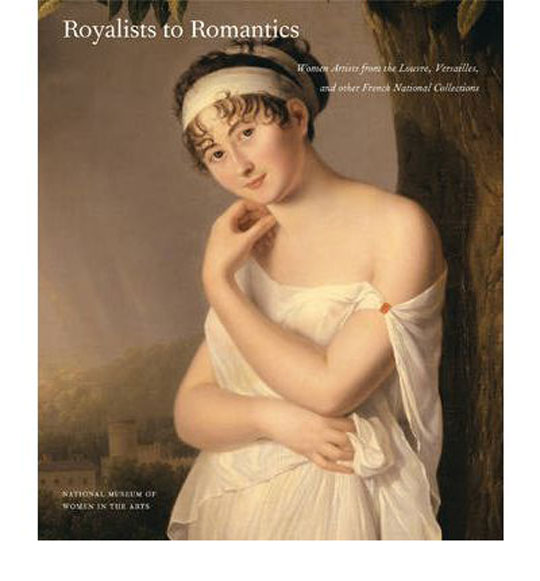 Laura Auricchio, Chair of Humanities in the School of Undergraduate Studies and Associate Professor of Art History at Parsons The New School for Design, served as exhibition adviser for Royalists to Romantics: Women Artists from the Louvre, Versailles, and Other French National Collections, opening at the National Museum of Women in the Arts (NMWA) in Washington, D.C., on February 24. The show will be on view through July 29, before traveling to Sweden’s Nationalmuseum in Stockholm.
Laura Auricchio, Chair of Humanities in the School of Undergraduate Studies and Associate Professor of Art History at Parsons The New School for Design, served as exhibition adviser for Royalists to Romantics: Women Artists from the Louvre, Versailles, and Other French National Collections, opening at the National Museum of Women in the Arts (NMWA) in Washington, D.C., on February 24. The show will be on view through July 29, before traveling to Sweden’s Nationalmuseum in Stockholm.
In conjunction with the opening, Auricchio will be giving a public lecture entitled “Women Artists in the French Revolution.” The talk is free with museum admission and for members. It will be offered on February 23 at noon at the National Museum of Women in the Arts, 1250 New York Avenue, N.W., Washington, DC.
Royalists to Romantics examines how female artists navigated through a complex field of social and professional challenges to forge successful careers in France between 1750 and 1850 – a tumultuous period that saw the flowering of the courts of Louis XV and XVI, the terrors of the French revolution, the rise and fall of Napoleon, and the restoration and second collapse of the Bourbon monarchy.
The exhibition features 77 paintings, prints, and sculptures created by 35 French women artists. Even the best-known of these women — Marguerite Gérard, Adélaïde Labille-Guillard, Anne Vallayer-Coster, Élisabeth Louise Vigée-Lebrun — are little-remembered today, although they ranked among the most celebrated artists of their time. Some flourished with support from well-placed patrons like Marie Antoinette, who helped paved the way for her favorite female artists to be accepted into the Académie Royale de peinture et de sculpture. Others forged unusual paths through the art world – one served as the official painter to the royal botanic garden, another traveled to the Académie Française in Rome without the state-sponsored funding available to her male counterparts.
Auricchio worked closely with the museum’s Chief Curator, Jordana Pomeroy, through every stage of the exhibition’s multi-year development – from selecting, researching, and grouping works, to drafting grant proposals and writing wall texts. She wrote one of the three essays published in the exhibition catalog, and all but two of its thirty-five biographies.
This article was originally posted here.
Please see the Salon.com article about the show, which includes a slideshow of images, here.


























